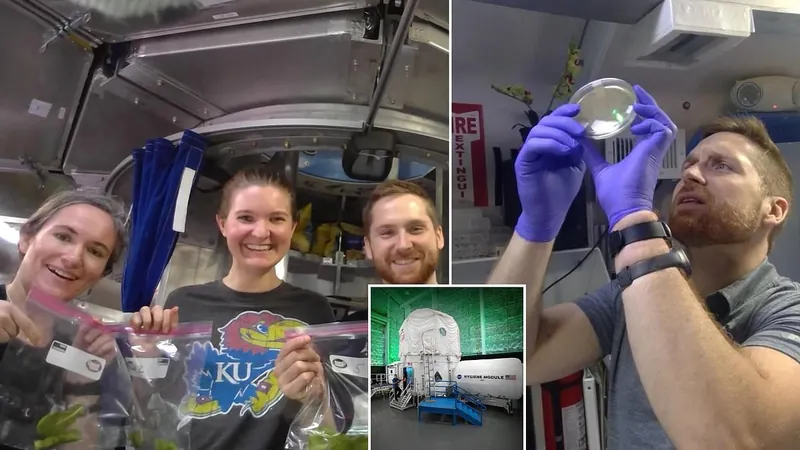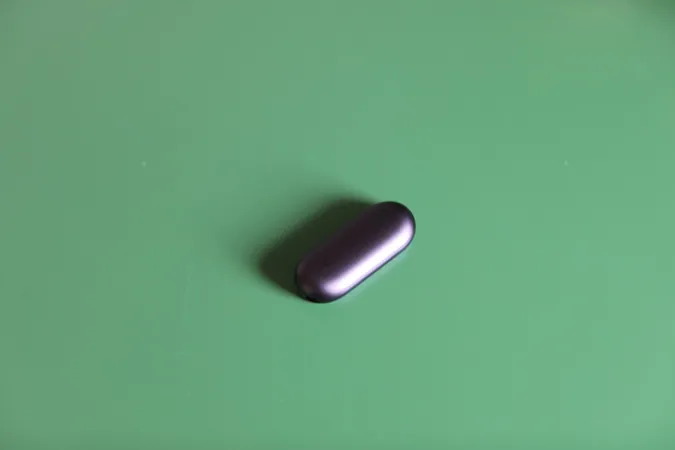
Surviving the Red Planet: Inside NASA's Grueling 45-Day Mars Simulation
2024-09-27
In a groundbreaking experiment, four brave volunteer scientists have just completed a rigorous 45-day mission inside NASA's most advanced Mars simulation to date. This unique experience took place at the Human Exploration Research Analog (HERA), a compact 650-square-foot habitat nestled within NASA's Johnson Space Center in Houston, Texas. The crew, comprised of Erin Anderson, Sergii Iakymov, Sarah Elizabeth McCandless, and Brandon Kent, finally emerged from their Martian cocoon on Monday, marking their triumphant return to Earth.
This mission was not just a test of endurance; it is a crucial stepping stone for NASA's plans to send humans to Mars by the 2030s. As the deadline approaches, studying human behavior in isolated and demanding environments is paramount for the success of future deep-space missions. During their time inside HERA, the crew conducted 18 different studies, offering invaluable insights into how humans cope with confinement and high-pressure tasks under simulated Martian conditions.
The team's activities were meticulously designed to mirror the challenges astronauts may face on the Red Planet. They engaged in a variety of tasks, such as cultivating a hydroponic garden, nurturing shrimp, deploying a small satellite, and performing virtual surface walks on Mars. They even practiced flying drones over simulated Martian terrain! This level of simulation allows researchers to assess how effectively astronauts can carry out their daily missions in a resource-scarce environment.
To emulate the communication challenges experienced during actual missions, NASA introduced delays in their communications, mimicking the potential 20-minute lag between Earth and Mars. This became a critical part of understanding the psychological impact of isolation and the need for astronauts to focus amidst potential frustrations.
During downtime, the crew found ways to alleviate stress, engaging in recreational activities like reading, playing cards, building with Legos, and enjoying music to maintain morale and camaraderie. The importance of mental well-being during extended missions cannot be underestimated, as history shows that isolation can lead to significant psychological strain.
After completing their mission, Brandon Kent made an emotional statement, saying, "Following our safe passage to Mars, and our safe return to Earth...we hereby officially transfer this exploration vessel to the flight analogs operations team." His words reflect the crew’s acknowledgment of the significance of their mission for NASA's future explorations.
In addition to HERA, NASA operates a larger simulation known as the Crew Health and Performance Exploration Analog (CHAPEA), which spans an impressive 1,700 square feet and allows for volunteer stays of up to one year! The first CHAPEA crew completed their mission in July and provided further insights into long-term space missions.
Intrigued by the prospect of participating in this extraordinary journey? NASA is actively seeking volunteers aged 30 to 55 who do not smoke for upcoming HERA missions. Could you handle the pressure and isolation of life on Mars? It might be the adventure of a lifetime!




 Brasil (PT)
Brasil (PT)
 Canada (EN)
Canada (EN)
 Chile (ES)
Chile (ES)
 España (ES)
España (ES)
 France (FR)
France (FR)
 Hong Kong (EN)
Hong Kong (EN)
 Italia (IT)
Italia (IT)
 日本 (JA)
日本 (JA)
 Magyarország (HU)
Magyarország (HU)
 Norge (NO)
Norge (NO)
 Polska (PL)
Polska (PL)
 Schweiz (DE)
Schweiz (DE)
 Singapore (EN)
Singapore (EN)
 Sverige (SV)
Sverige (SV)
 Suomi (FI)
Suomi (FI)
 Türkiye (TR)
Türkiye (TR)